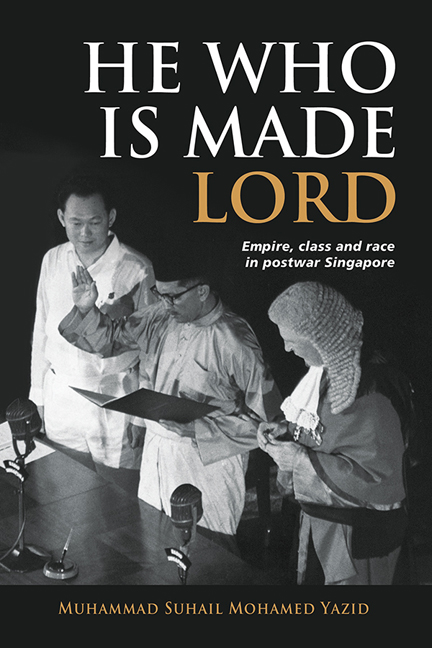Book contents
5 - Multiracial, or Communal Icon?
Published online by Cambridge University Press: 01 March 2024
Summary
Breaking Racial Divides
The durability of class privileges in Singapore and the Federation was not totally divorced from the imprints of race. Upon Yusof's appointment as the Yang di-Pertuan Negara, the PAP government trumpeted the idea that he was to be a symbol of unity for all of Singapore, not a parochial figure for any racial community. During the installation ceremony, Lee emphatically broadcasted to the residents and citizens of Singapore that Yusof as Yang di-Pertuan Negara “symbolises all of us”. The Yang di-Pertuan Negara, as a national symbol, was therefore meant to transcend race. It is important to note that in the historical context, the difference between race or the physical colour of one's skin, and ethnicity, which connotes the cultural practices beyond the biological referent, was not a relevant distinction. As a legacy of colonial knowledge, the historical actors in late colonial Singapore viewed race as a marker which carried social meaning and was a signifier of cultural attributes. It was also an opaque cloak which obscured deeper structural issues stemming from class contentions, or the social relations of economic production.
This message of transcending racial divisions subdued the status quo of colonial society in two ways. The first could be characterized
by a “horizontal” movement. Under colonial rule, the British governed racial communities of Malaya separately, resulting in racialized division of labour and disparate socio-economic outcomes between different racial communities. British officials hardly gave any consideration to the formation of a post-racial sense of fraternity to bond their colonial subjects, at least before the Second World War. The Malayan-born Yang di-Pertuan Negara was thus a corporeal symbol of transition into a more cohesive society. In his speech during Yusof's installation ceremony, the Singaporean prime minister was mindful of how class issues had become potently racialized:
(t)he racial and cultural conflicts engendered by differing economic status between the indigenous peoples and the Chinese settlers in neighbouring countries are grim reminders to us to accomplish our task of integrating our peoples now and quickly.
The PAP government aimed to eradicate communalism in Singapore. It recognized that the gulf between the socio-economic realities of Singapore’s racial communities turned the already visible racial divides material.
- Type
- Chapter
- Information
- He Who Is Made LordEmpire, Class and Race in Postwar Singapore, pp. 165 - 208Publisher: ISEAS–Yusof Ishak InstitutePrint publication year: 2023

